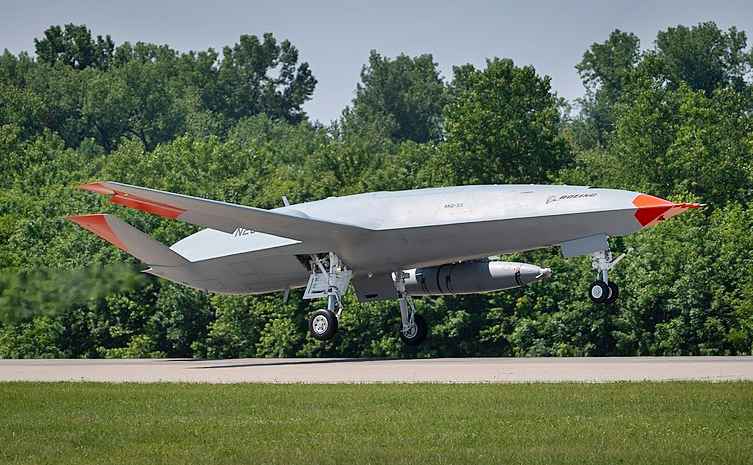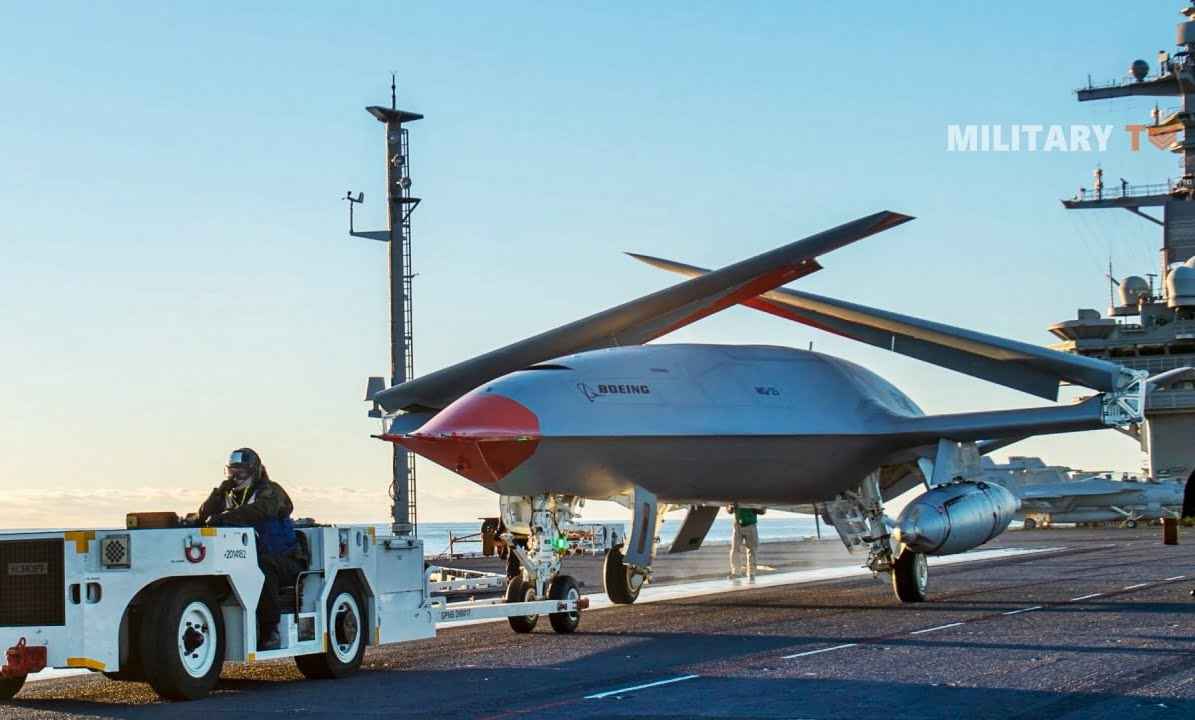Follow Us:

Share
Defense Feeds – The Boeing MQ-25 Stingray is an aerial refuelling drone that resulted from the Carrier-Based Aerial-Refuelling System (CBARS) program, which grew out of the earlier Unmanned Carrier-Launched Airborne Surveillance and Strike (UCLASS) program.
In late April 2019, the first MQ-25 test aircraft was taken by road from Boeing’s technical plant at St. Louis’s Lambert International Airport across the Mississippi River to MidAmerica St. Louis Airport, which is conjoined to Scott Air Force Base.
Following taxi tests, the Federal Aviation Administration certified the aircraft and granted airspace for flight testing and the MQ-25 took its first flight on 19 September 2019.

The MQ-25 is actually comprised of two major segments. The first one is the MQ-25 Air System (air vehicle), and the Unmanned Carrier Aviation Mission Control System (UMCS), the system required for carrier integration and command and control of the MQ-25 air vehicle and payload.
PMA-268 is known to manage these segments as the government Lead Systems Integrator (LSI). In regard to the design, the Boeing’s MQ-25 design is powered by one Rolls-Royce AE 3007N turbofan engine delivering 10,000 lbf of thrust.
This is a variant of the engine used to power the Navy’s MQ-4C Triton. The aircraft is less stealthy than flying wing UAVs. It does feature a stealthy fuselage shaping, flush inlet to shield engine blades from radar and V-tail.
In 2021, the U.S. Navy’s MQ-25 Stingray unmanned tanker conducted its first aerial refuelling with an F-35C Joint Strike Fighter, the third aircraft type to take fuel from the Navy’s first unmanned system designed to deploy in a future carrier strike group.
The latest refuelling follows a six-hour test flight on August 18th, 2021 when the MQ-25 refuelled an E-2D Advanced Hawkeye for the first time. The E-2D was not originally built to receive fuel in-air but was modified to add the aerial refuelling capability in 2019. Chief of Naval Operations Adm.
Mike Gilday said that these tests are “really the first foray into the carrier air wing of the future, understanding how we integrate it and how we leverage it, how we’re going to use unmanned and manned together in a way that’s going to be quite effective.
In addition to the aerials refuelling tests, the MQ-25 has been undergoing deck handling work and other testing behind the scenes in preparation for fleet introduction.
T1 has completed 36 flight tests providing the program with valuable information on aerodynamics, propulsion, guidance and control in advance of the MQ-25 engineering and manufacturing development aircraft deliveries.
This aircraft was also craned onboard the USS George H.W. Bush (CVN-77) of the Nimitz class in 2021. The drones will not be tested in flight from the carrier just yet, but the Navy will start looking into how they will be integrated onboard the ship, including moving them around on elevators and in the hangar deck.

The prototype for the US Navy’s new unmanned tanker will be launched aboard American aircraft carriers in 2026. The tanker platform shows potential for the Navy, despite the fact that testing is still ongoing. It has the potential to extend the range of the current carrier air wing without the need for a pilot.
According to Vice Admiral, Scott Conn, the deputy chief of naval operations, he highlighted that the development of the MQ-25A need to continue to ensure that it’s going to be able to function within the air wing and fly up to 500 miles away from the ship and be able to pass gas on the way out.
A press release from Naval Air Systems Command also said that the integration of a persistent, sea-based tanker into the carrier air wing will improve the utilization of the combat strike fighters and increase the range of aircraft carriers. The unmanned nature of the Stingray may offer the Navy with a stealth advantage.
With no cockpit, the Stingray might provide a smaller, more stealthy profile to enemy radar than a large tanker aircraft, making it a more survivable aircraft. However, the MQ-25 Stingray is still not in service yet with American warships, it will not be long until the tanker is in the air over the ocean.
In addition, the MQ-25 Stingray will also be the first operational, carrier-based unmanned aircraft with aerial refuelling and intelligence, surveillance and reconnaissance (ISR) capabilities, that will improve the Carrier Air Wing and Carrier Strike Group’s capability and versatility.
The integration of a long-range, sea-based tanker to the CVW will allow us to effectively utilize our combat strike fighters while also extending the range of our aircraft carriers.
While seeing a drone craned onto a supercarrier is a novelty as of today, if all goes as planned in the MQ-25 program, these aircraft will play a central role in the carrier air wings of the future. The Navy expects to eventually shift to a 40 to 60 unmanned-manned split, before achieving a longer-term goal of 60 to 40 in favour of drones.
The MQ-25 serves as a crucial stepping stone towards fulfilling other air combat operations that can be carried out by carrier-based drones.
Even though it might not be ready to fly to the skies from a carrier deck quite yet, but with an MQ-25 demonstrator already aboard a carrier for the first time, we get a glimpse into the carrier air wing’s future.
Share
Defense Feeds is publication focusing on informing, engaging, and empowering the world by providing accurate information from defense technology.
Powered by Defense Feeds © 2025 – All rights reserved.